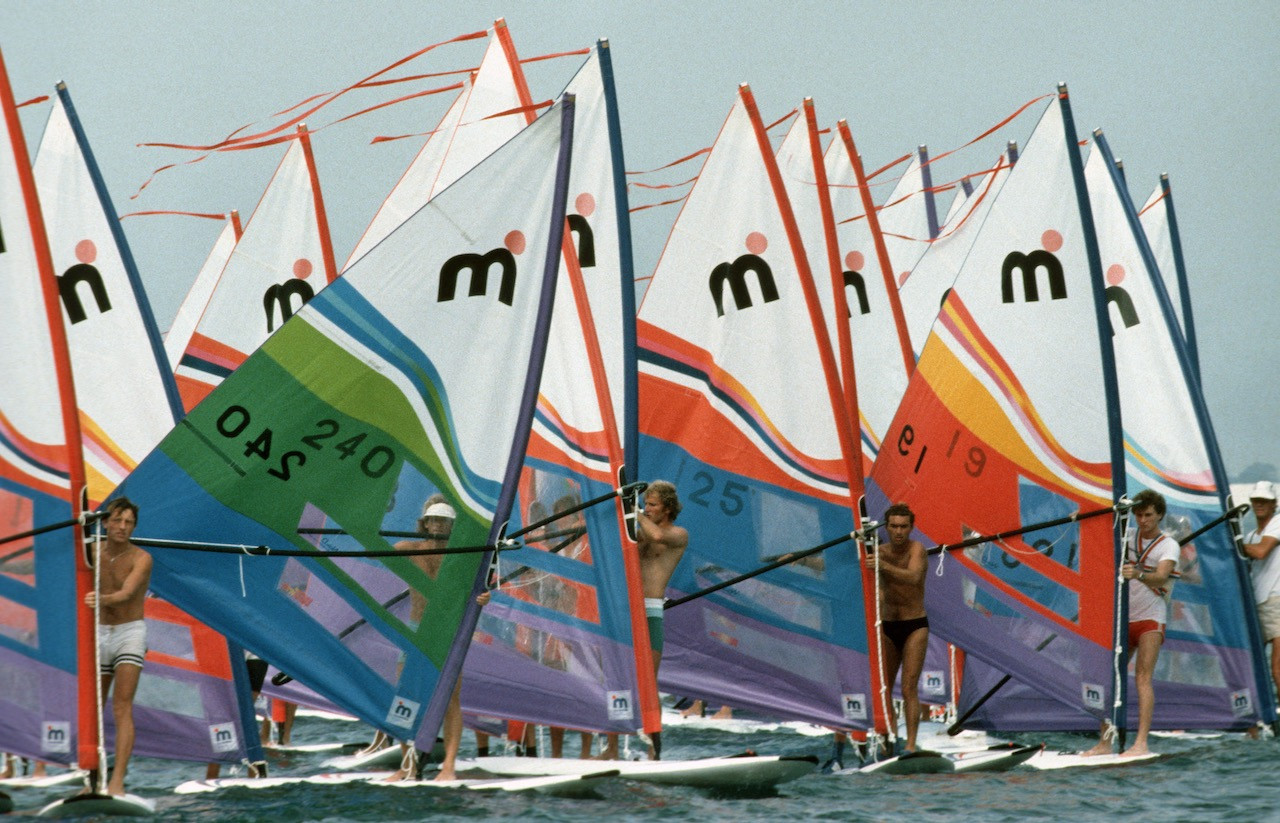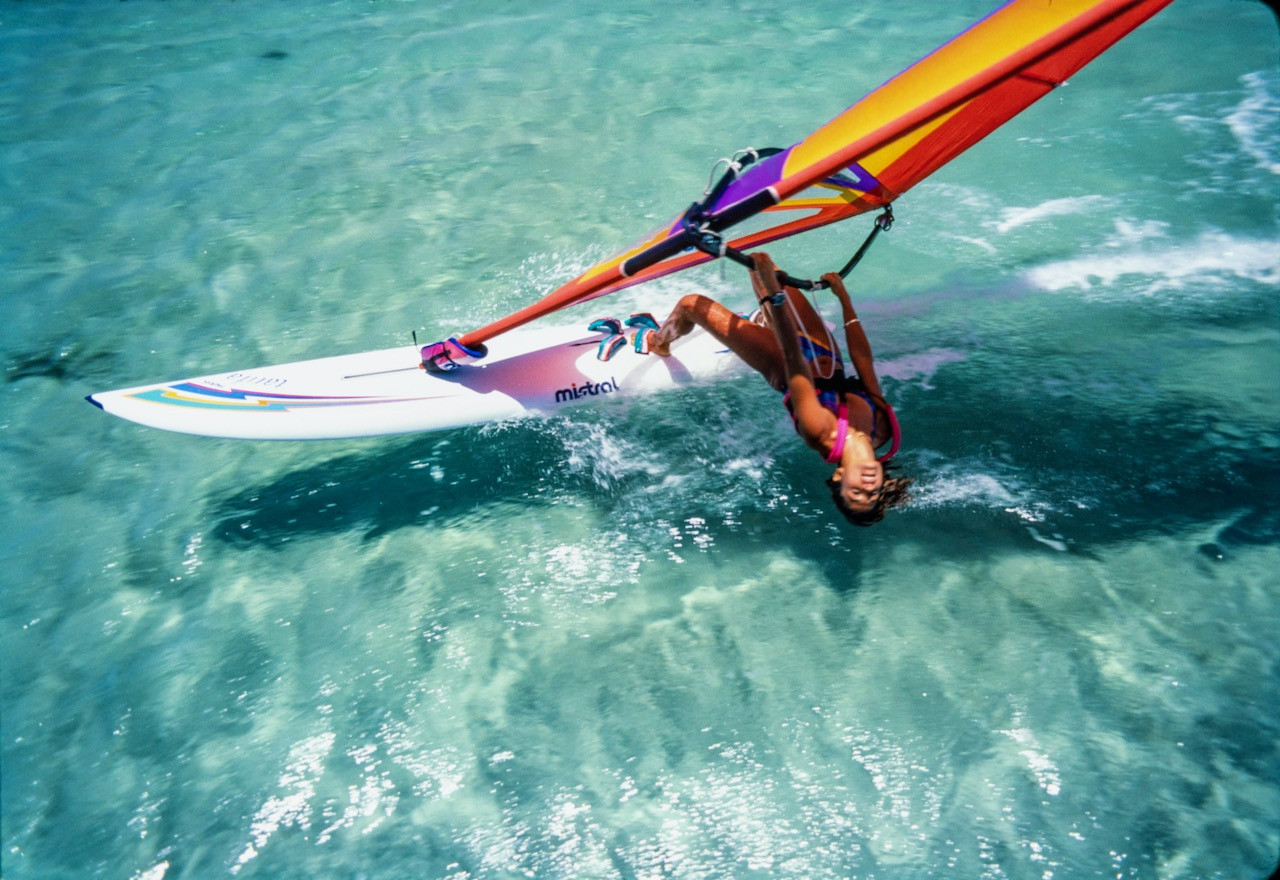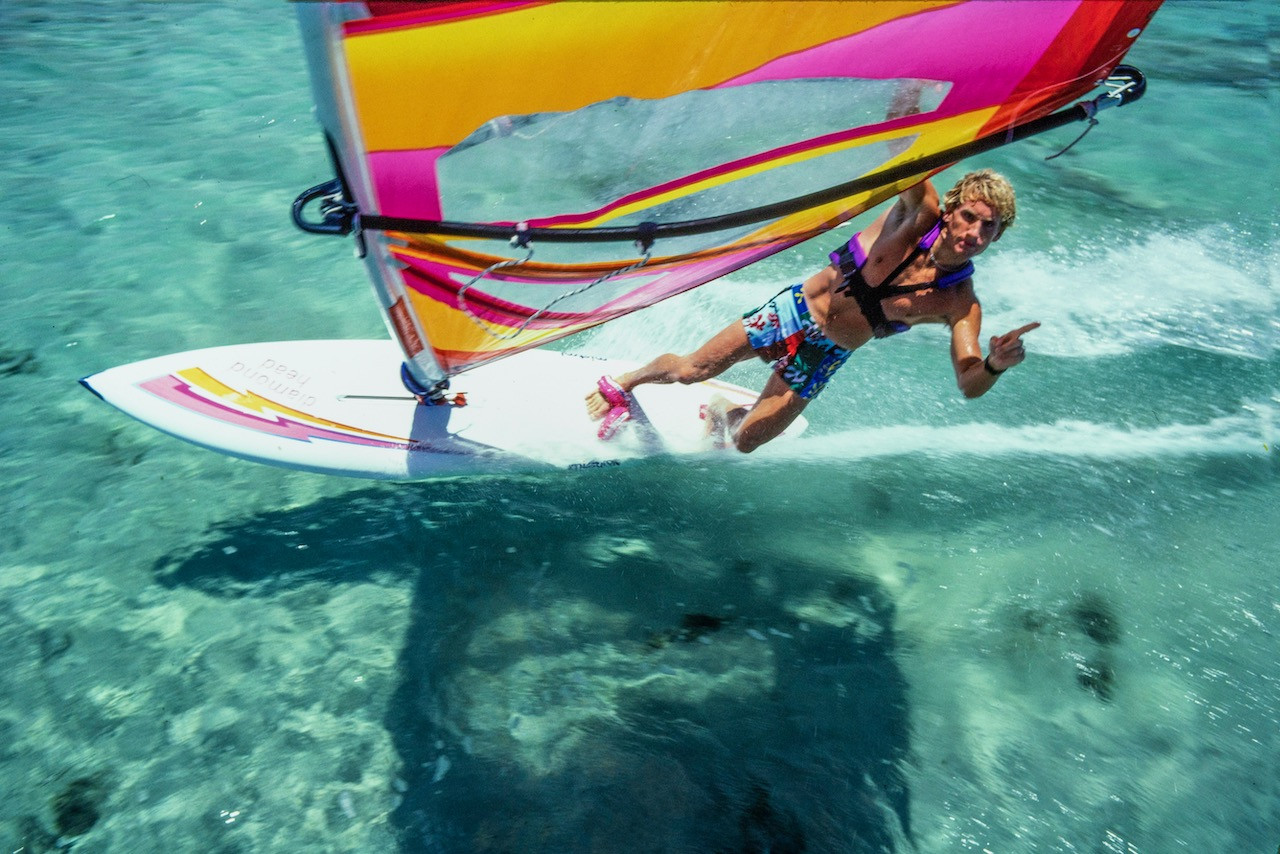Iconic Early Mistral Designs 1982 - 1986

In October 1981, New Mistral owners Aida inherited a limited Mistral board line. Between 1981 and 1982, it had barely moved on. It included the ageing one-design Mistral Competition (Polyethylene) and the Competition Light (Epoxy), two outdated funboards in the Kailua (Polyethylene) and Naish (Epoxy) boards, the very outdated Take Off (Polycoren), and the highly focused M1 which was a commercial non-starter. The most up-to-date and exciting part of Mistral’s inventory would be its accessories, apparel, bags, and footwear. It would take considerable investment, ingenuity and marketing genius to elevate the brand on a pathway to sustainability.
1982 - 1983 Arrivals - Tarifa, Maui, Diamond Head and Hookipa
With heavy investment from Aida, between 1982 and 1983, five new boards and three updates were made, which would be a pivotal moment for the brand. Boards Magazine UK in 1983 stated, ‘Mistral Goes Radical. Since last autumn, Mistral appears to have been bringing out a board a week. The three final additions in the range are all for fun. The Tarifa is a 3.52 m pintail winger (Polycoren ABS), setting it well apart from the more moderate Maui; the Diamond Head is a 2.95 m epoxy marginal; and the Hookipa is a 2.65 m epoxy sinker. All three have predictably been developed in Hawaii by Rick and Robby Naish, completing the massive 10-model Mistral range, eight new for ‘83.’ This was the beginning of Mistral’s evolution, a vision Brockhaus had wanted some years prior in delivering on the wants and needs of sailors wanting funboard designs in particular.


1984 Arrivals - Pan, Bermuda, Superlight, Malibu and Garda.


For 1984, the range added the legendary Rick Naish Pan Am board. The Mistral Competition would take on different guises, such as the Competition Light, Superlight and Bermuda and later, the SST Competition, a completely different design, nothing like the original, but the name was used. From a consumer viewpoint, this was confusing. Clearly, it was felt that hanging on to the longer conventional boards was necessary even if one-design racing was no longer as sociable or fun as it had been. The demand was diminishing, with the emphasis being on fun and an evolutionary lean towards the more extreme elements of the sport, which would prove disastrous for the sport's health at the grassroots level. However, longboard riding would be salvaged with the release of the original Rick Naish Pan Am board that made longboard windsurfing in high winds over a distance a pure joy and totally aspirational.
It would be the Rick Naish-designed Pan Am board, released as a Mistral production board in 1993, which would become recognised by many as the forerunner to all modern-day longboard race boards. Elegant, stream-lined, a true gun-runner, festooned with foot-straps, a multi-positional mast foot track, and a relatively small retracting daggerboard, it was an iconoclastic cruiser symbolising long-distance speed machine named after the famous Pan Am Cup race between 1980 and 1983. It would become the catalyst for the evolution of the famous Mistral Equipe boards released into production in 1986 and the basis of what would become Mistral's one-design race board and, ultimately, the Olympic board.